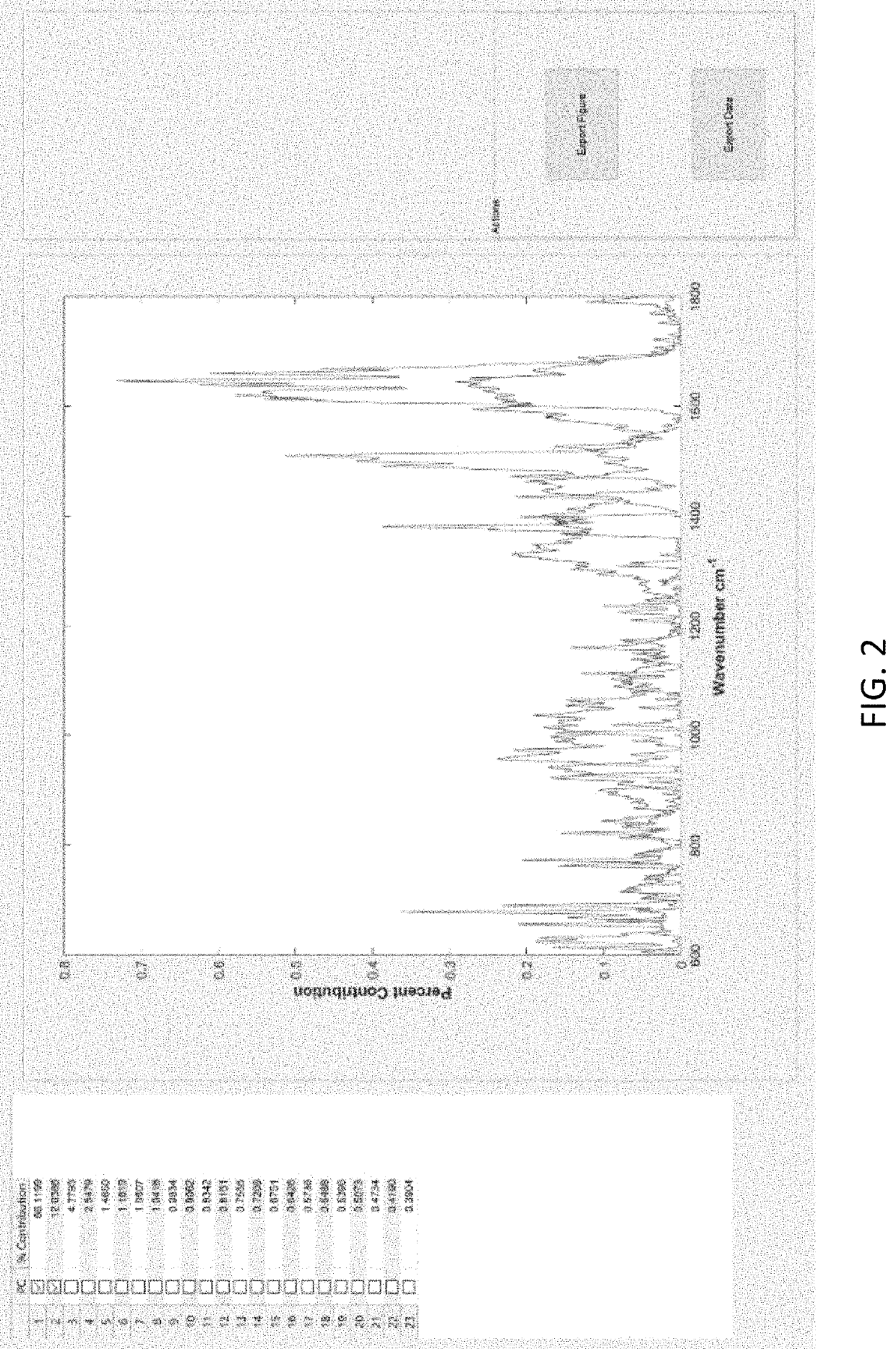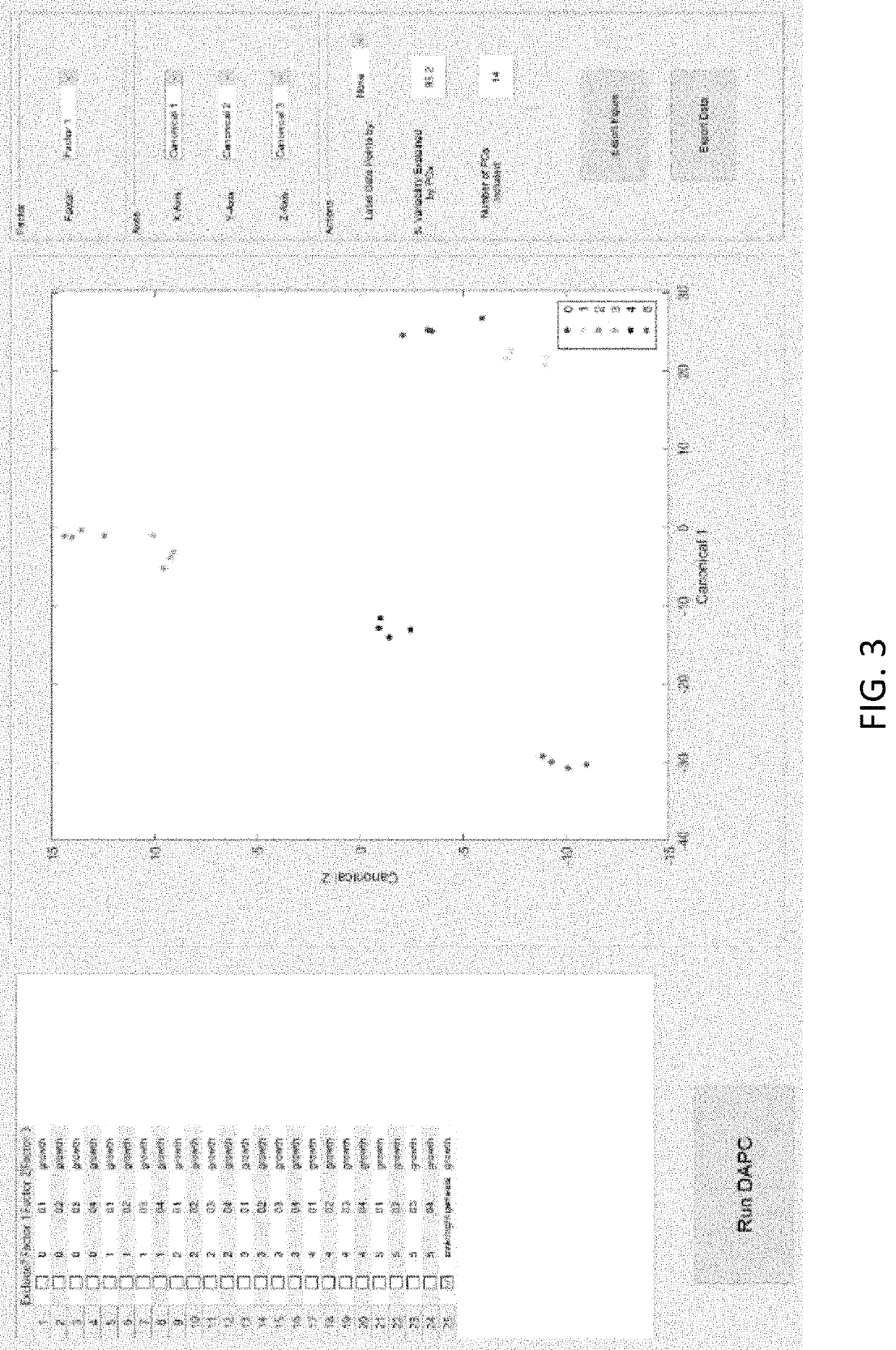Methods of disease detection and characterization using computational analysis of urine raman spectra
a technology of urine raman and computational analysis, applied in the field of disease detection and characterization, can solve the problems of inflammatory response to tumor tissue, dead/dying renal tissue, and compromising the integrity of the renal circulation,
- Summary
- Abstract
- Description
- Claims
- Application Information
AI Technical Summary
Benefits of technology
Problems solved by technology
Method used
Image
Examples
Embodiment Construction
[0052]Embodiments of the invention provide various disease detection and characterization methods using computational analysis of Raman spectra. These methods are used to detect disease-specific multi-molecular patterns associated with specific diseases. The multi-molecular patterns result in a Raman “spectral fingerprint,” that can be compared with that of urine from healthy persons or those with specific diseases. Specific methods include: a) optionally truncating spectra to a desired wavenumber range; 2) applying baseline correction e.g., with the Goldindec algorithm, or with ISREA and StaBAL; 3) vector or specific band normalization; 4) principal component analysis (PCA); 5) discriminant analysis of principal components (DAPC); 6) identification of wavenumber loadings for PCA and DAPC; 7) calculation of total canonical distance (TCD); and 8) performing leave-one-out analysis of chemometric DAPC models to report predictive capabilities in terms of accuracy, sensitivity (true-posi...
PUM
 Login to View More
Login to View More Abstract
Description
Claims
Application Information
 Login to View More
Login to View More - R&D
- Intellectual Property
- Life Sciences
- Materials
- Tech Scout
- Unparalleled Data Quality
- Higher Quality Content
- 60% Fewer Hallucinations
Browse by: Latest US Patents, China's latest patents, Technical Efficacy Thesaurus, Application Domain, Technology Topic, Popular Technical Reports.
© 2025 PatSnap. All rights reserved.Legal|Privacy policy|Modern Slavery Act Transparency Statement|Sitemap|About US| Contact US: help@patsnap.com



